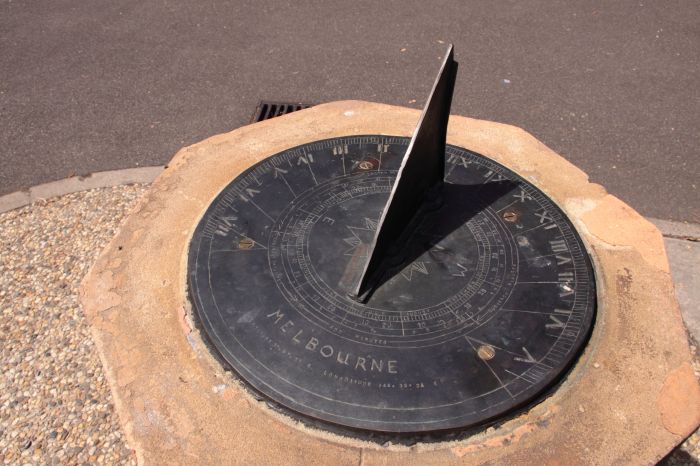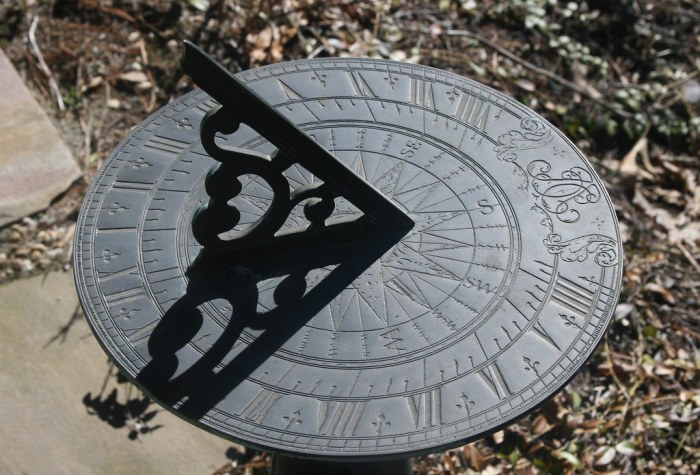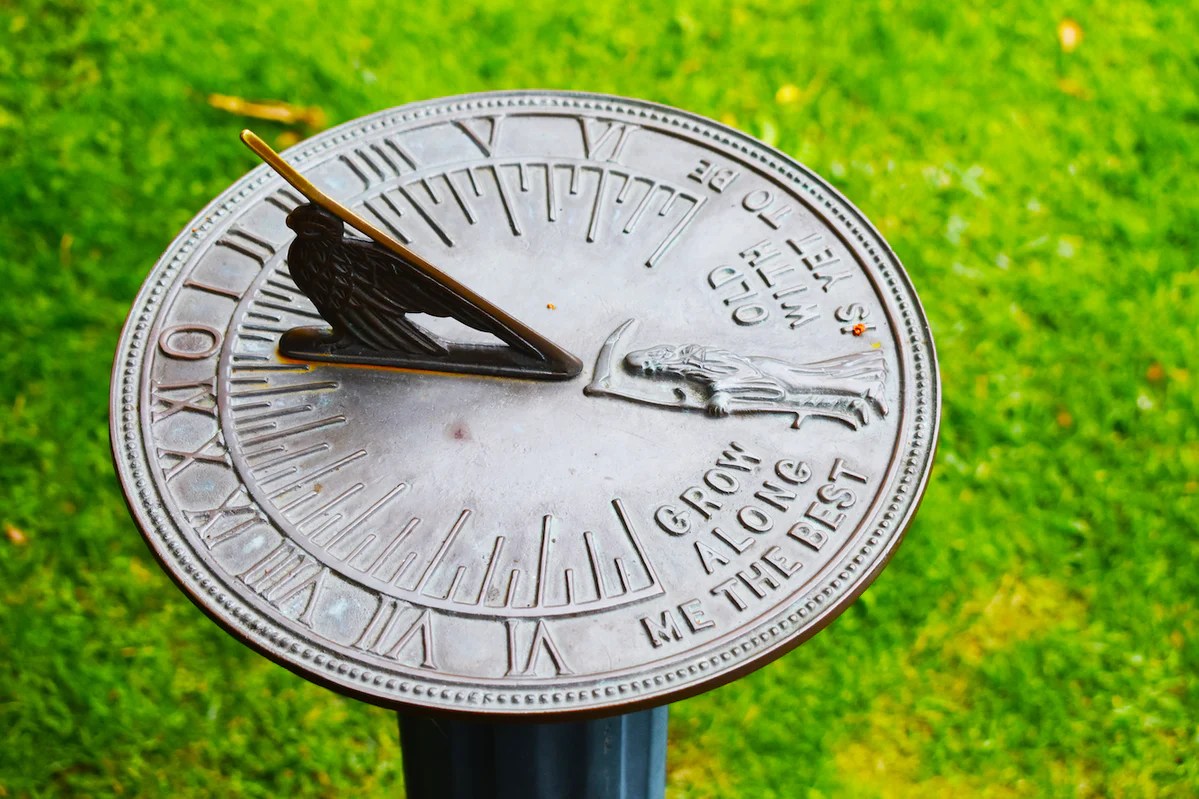Name something you used to tell time: a question that evokes a rich tapestry of historical and cultural practices. From the sundials of antiquity to the atomic clocks of today, humanity’s quest for accurate timekeeping has shaped our civilizations and daily lives.
Our journey through time begins with ancient sundials, whose shadows cast by the sun marked the hours. Water clocks, with their steady flow, and sand clocks, with their relentless descent, followed, providing more precise measurements. The invention of the pendulum clock in the 17th century revolutionized timekeeping, paving the way for portable timepieces and the rise of personal timekeeping.
Historical Timekeeping Methods

Before the advent of modern timekeeping devices, humans relied on various ancient methods to measure time. These methods, often ingenious and reflective of the scientific knowledge of the time, played a crucial role in organizing daily life and facilitating societal advancements.
Sundials
One of the earliest timekeeping devices, sundials harness the power of the sun to cast shadows that indicate the time of day. The simplest sundials consist of a stick or obelisk planted in the ground, with markings to indicate the hours as the shadow moves across them.
Ancient civilizations such as the Egyptians, Greeks, and Chinese developed elaborate sundials with intricate designs and precise calibrations.
Water Clocks
Water clocks, also known as clepsydras, measure time by the controlled flow of water. Water drips from a reservoir into a calibrated container, and the time elapsed is determined by the amount of water collected. Water clocks were widely used in ancient Greece, Rome, and China, and some variations remained in use until the 17th century.
Sand Clocks
Sand clocks, or hourglasses, consist of two glass bulbs connected by a narrow neck. Sand flows from the upper bulb into the lower one at a controlled rate, and the time elapsed is indicated by the amount of sand that has shifted.
Sand clocks were invented in the Middle Ages and became widely used as a simple and portable timekeeping device, particularly in navigation and for measuring short intervals.
Mechanical Timepieces

The development of mechanical timepieces revolutionized the accuracy and portability of timekeeping. These devices incorporated ingenious mechanisms that harnessed the principles of physics to measure and display time.
The Pendulum Clock
Invented by Christiaan Huygens in 1656, the pendulum clock introduced unprecedented precision to timekeeping. The rhythmic swing of the pendulum, regulated by gravity, provided a stable and reliable reference for measuring time. This breakthrough enabled clocks to achieve an accuracy of within a few seconds per day, a significant improvement over previous timekeeping methods.
The Balance Wheel
The balance wheel, developed by Robert Hooke in the late 17th century, played a crucial role in the development of portable timepieces. This spring-regulated device, which oscillated back and forth, provided a compact and reliable means of regulating timekeeping. Its incorporation into pocket watches and marine chronometers made it possible to measure time accurately on the go.
Spring-Driven Watches
The invention of spring-driven watches in the 18th century further revolutionized personal timekeeping. These watches, powered by a coiled mainspring, offered greater convenience and portability than pendulum clocks. The development of intricate mechanisms, such as the fusee and chain, allowed for more consistent power delivery, resulting in improved accuracy and reliability.
Electronic Timekeeping

Electronic timekeeping methods have revolutionized the way we measure and maintain time. From quartz crystal oscillators to atomic clocks and GPS-based systems, electronic timekeeping has brought unprecedented precision and accuracy to our daily lives.
Quartz Crystal Oscillators
Quartz crystal oscillators utilize the natural resonant frequency of quartz crystals to generate highly stable electrical signals. These signals are then used to drive digital clocks, providing accurate timekeeping over long periods. Quartz crystal oscillators are commonly found in wristwatches, clocks, and other electronic devices.
Atomic Clocks
Atomic clocks are the most precise timekeeping devices ever invented. They utilize the resonant frequency of atoms, which is extremely stable and unaffected by environmental factors. Atomic clocks are used in applications where extreme precision is required, such as navigation systems, scientific research, and telecommunications.
GPS-Based Timekeeping Systems
GPS-based timekeeping systems utilize the Global Positioning System (GPS) to determine the time. GPS satellites transmit precise timing signals that can be received by GPS receivers on Earth. These signals are used to synchronize clocks over vast distances, providing accurate timekeeping on a global scale.
Alternative Timekeeping Methods
Timekeeping methods have evolved from observing celestial bodies to utilizing advanced electronic devices. In addition to the prevalent methods discussed earlier, alternative approaches have played significant roles in various cultures and historical periods.
Celestial Timekeeping
Observing celestial bodies, such as the sun and moon, has been a fundamental method of timekeeping in many cultures throughout history. The daily movement of the sun across the sky provides a natural clock, with its position indicating the approximate time of day.
Similarly, the phases of the moon, which repeat in a predictable cycle, have been used to mark the passage of time.
Candle Clocks
Candle clocks, also known as candle dials, were ingenious devices used for timekeeping in the absence of other reliable methods. These clocks consisted of a marked candle that burned at a relatively constant rate. As the candle burned, the markings on its surface indicated the approximate time.
Candle clocks were particularly useful during the medieval period, when they were commonly used in monasteries and households.
Biological Clocks
Biological clocks, also known as circadian rhythms, are internal timekeeping mechanisms found in living organisms. These rhythms regulate various physiological processes, including sleep-wake cycles, hormone production, and body temperature. By aligning their activities with these biological clocks, organisms can optimize their survival and fitness in their environment.
Biological clocks have also been used in timekeeping, with some cultures relying on the behavior of certain plants or animals to indicate the time of day or year.
Timekeeping in Different Cultures

Throughout history, diverse civilizations have developed unique methods of measuring and perceiving time, reflecting their cultural practices and beliefs. These timekeeping systems have profoundly influenced daily routines, social interactions, and the overall fabric of societies.
Influence of Cultural Practices on Time Perception
Cultural practices shape how individuals perceive and value time. In some cultures, time is viewed as a linear progression, while in others, it is seen as a cyclical or non-linear entity. For example, in Western cultures, time is often seen as a valuable commodity that can be managed and controlled, while in many Eastern cultures, time is perceived as a more fluid and interconnected concept.
Role of Timekeeping in Shaping Daily Routines
Timekeeping plays a crucial role in organizing daily routines. In societies with strict timekeeping systems, such as industrialized nations, individuals adhere to schedules and punctuality is highly valued. This allows for efficient coordination of activities and maximizes productivity. In contrast, in cultures with more flexible timekeeping practices, daily routines may be less structured and individuals may have a more relaxed approach to time management.
Role of Timekeeping in Social Interactions, Name something you used to tell time
Timekeeping also influences social interactions. In cultures where punctuality is highly valued, arriving late for appointments or social gatherings is considered disrespectful. Conversely, in cultures with more flexible timekeeping practices, tardiness may be more tolerated or even expected. The perception of time can also affect the nature of social interactions, such as the pace and duration of conversations or the frequency of social gatherings.
Quick FAQs: Name Something You Used To Tell Time
What is the oldest known timekeeping device?
Sundials, dating back to ancient Egypt and Mesopotamia.
How did water clocks work?
Water flowed from a reservoir at a constant rate, marking the passage of time by filling graduated containers.
What is the significance of the pendulum clock?
It greatly improved accuracy by regulating the swinging motion of a pendulum.
